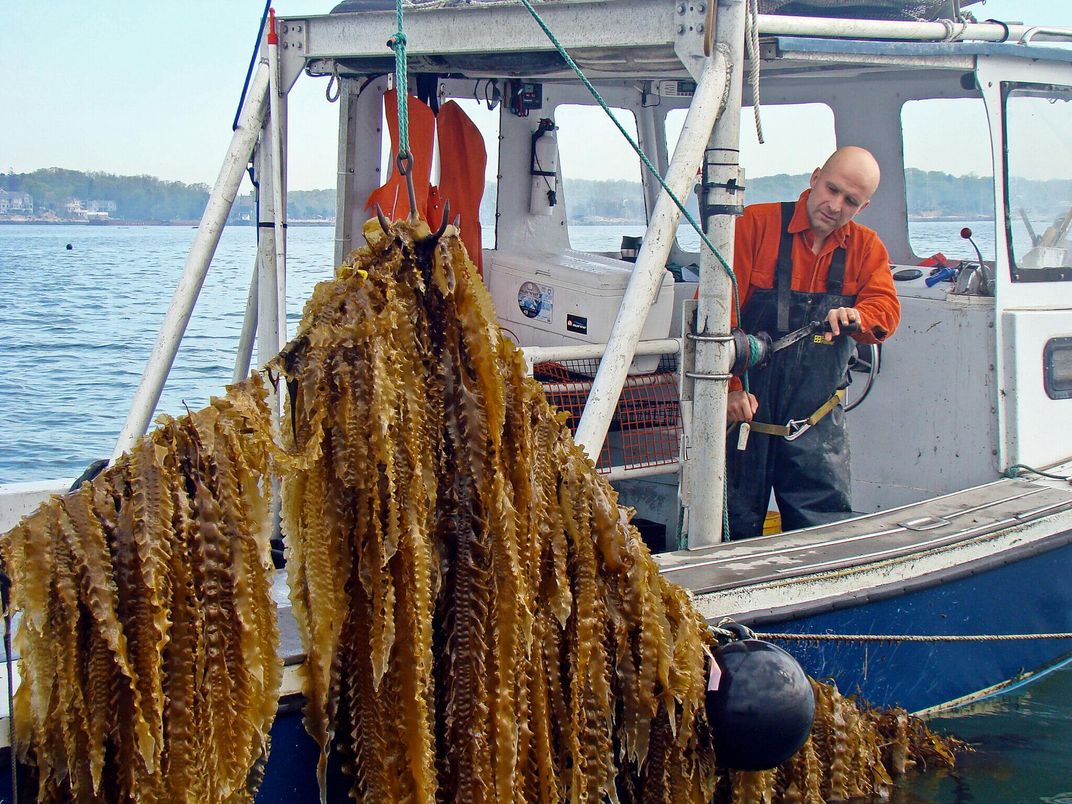Facing Warming Waters, Fishermen Are Taking Up Ocean Farming
Called regenerative ocean farming, this model involves growing shellfish and kelp in underwater gardens
/https://tf-cmsv2-smithsonianmag-media.s3.amazonaws.com/filer/86/06/86060033-2f97-40db-9ed2-60cae18de2e0/dune-lankard-holding-sugar-kelp.jpeg)
For all his life, Alaskan fisherman Dune Lankard has looked to the sea—for food, work and purpose. “I started fishing when I was five,” says Lankard, a member of the Athabaskan Eyak community, an Indigenous group from the Copper River Delta. “I really don’t have any skills beyond the ocean.”
Born in 1959, the same year Alaska became a state, Lankard has witnessed various natural and man-made disasters—including the commoditization of Indigenous peoples’ traditional fishing way of life—that have disrupted his industry and homeland. “As an Indigenous fisherman, I’ve seen it all,” he says.
In 1964, a massive magnitude 9.2 earthquake, fittingly called the Great Alaska Earthquake of 1964, triggered a swell of tsunamis that killed more than 130 people and devastated fisheries. Exactly 25 years later, an Exxon Valdez oil tanker struck Bligh Reef in the Prince William Sound, spewing 10.8 million gallons of crude oil into the sea. The spill affected 1,300 miles of water and coastline, much of which is still considered to be in recovery.
Now, Alaskan fishermen are facing another urgent problem. Alaska is already feeling the effects of climate change, as the warming oceans have wreaked havoc on ecosystems of krill, wild kelp forests, salmon and birds. That’s all on top of the lingering losses caused by the 1989 oil spill. Before the Exxon spill, the Sound’s spring run of herring totalled more than 200,000 tons returning home. Today, there are only 4,000 tons returning annually. Lankard recently sold his fishing permit after several consecutive bad seasons.

To help mitigate the effects of warming waters, Lankard is now embracing an approach known as regenerative ocean farming, which involves growing seaweed and shellfish in small underwater gardens. Once a commercial fisherman, Lankard now mostly farms kelp.
“Alaska has always been based on extraction. We’re a natural resource extraction state,” says Lankard. “What regenerative ocean farming does is create a new regenerative economy that’s based on conservation, restoration and mitigation, as opposed to more extraction of resources.”
The burgeoning concept of regenerative ocean farming was developed and named by Bren Smith, a Canadian commercial fisherman turned ocean farmer. He believes ocean farming is the new farming model of the future.
After leaving commercial fishing boats in the Bering Sea in the 1990’s to work on salmon farms, Smith quickly grew disheartened by the farms’ inherent monoculture. Aquaculture was touted as a solution to overfishing, he says, yet was just as destructive.
Disillusioned by the fishing industry, Smith set out to find a more sustainable way to work with the seas. He made his way to Long Island Sound, where there was a program to lease shellfishing grounds to young commercial fishermen under 40. He leased 20 acres of water, where he’s been raising oysters, mussels and kelp on Thimble Island Ocean Farm in Connecticut since 2005. There, Smith worked to hone his sustainable ocean farming model—a journey he chronicled in his James Beard Award-winning memoir, Eat Like a Fish.
“What’s unique about the ocean as an agricultural space? When you stop and ask that question it becomes so easy,” says Smith. “The ocean’s like why don’t you grow things that don’t swim away and don’t have to feed? When you look at the ocean that way, there are hundreds of kinds of shellfish, and thousands of plants we can grow. That opens up a whole frontier of agriculture.”